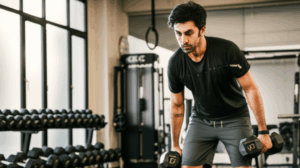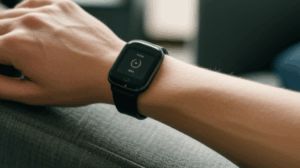A routine test can be a simple, uneventful part of life, but sometimes, it can reveal a hidden danger lurking beneath the surface, especially for professional athletes. These individuals, who seem to be the epitome of health and fitness, can unknowingly harbor “silent killer” diseases that threaten their lives. This article explores some of these conditions, emphasizing the importance of screening and early detection in the athletic population.
The Silent Threat: Hypertrophic Cardiomyopathy (HCM)
Hypertrophic cardiomyopathy (HCM) is a genetic cardiovascular disease that often goes undetected in young athletes. It affects as many as one in 200 people and often runs in families. In many instances, individuals with HCM exhibit no symptoms, making it a true “silent killer“. HCM is the leading cause of sudden cardiac arrest in young people.
What is HCM?
HCM is characterized by the thickening of the heart muscle, particularly the left ventricle. This thickening can obstruct blood flow and disrupt the heart’s electrical system, leading to arrhythmias and an increased risk of sudden cardiac death.
The Importance of Screening
Due to the potential for sudden cardiac death, screening for HCM is crucial for athletes. The American Heart Association recommends pre-participation physical exams every two years for high school and college athletes, including a review of personal and family medical history and a physical examination. The European Society of Cardiology recommends similar screening but with the addition of an electrocardiogram (ECG).
Screening Methods
- Electrocardiogram (ECG): A highly sensitive tool for detecting HCM, revealing characteristic changes in over 90% of cases.
- Echocardiogram: Uses ultrasound to visualize the heart and measure the thickness of the heart muscle. A septal thickness measurement greater than 15 mm is considered diagnostic for HCM.
- Cardiac MRI: Provides detailed images of the heart, helping to identify focal hypertrophy and fibrosis.
- Genetic Testing: Can be useful in identifying individuals with a genetic predisposition to HCM, especially those with a family history of the condition.
Differentiating HCM from Athlete’s Heart
Distinguishing HCM from the “athlete’s heart,” a benign adaptation to exercise, can be challenging. In well-trained athletes, the left ventricular wall thickness may increase by 10% to 20%, making it difficult to differentiate from HCM. However, certain ECG characteristics, such as T wave inversion, ST depression, and prominent Q waves, are more indicative of HCM than a normal athletic heart.
Management and Prevention
Early detection of HCM allows for interventions to prevent complications and sudden cardiac death. Management strategies include:
- Lifestyle Modifications: Avoiding high-intensity or contact sports.
- Medications: Beta-blockers and calcium channel blockers can help control heart rate and blood pressure.
- Implantable Cardioverter-Defibrillator (ICD): A device that can deliver an electric shock to restore a normal heart rhythm if a life-threatening arrhythmia occurs.
Other “Silent Killers” in Athletes
Besides HCM, several other conditions can pose a silent threat to athletes.
Commotio Cordis
Commotio cordis is a rare but often fatal condition that occurs when a blow to the chest causes sudden cardiac arrest. It is most common in young athletes, particularly those participating in sports like baseball, hockey, and lacrosse. Prevention strategies include using appropriate protective equipment and teaching athletes to avoid chest impacts.
Coronary Artery Anomalies
Anomalies in the coronary arteries, which supply blood to the heart, can also lead to sudden cardiac death in athletes. These abnormalities may restrict blood flow during exercise, causing ischemia and arrhythmias. Screening for coronary artery anomalies may involve ECG, echocardiography, or cardiac MRI.
Myocarditis
Myocarditis, an inflammation of the heart muscle, is another potential cause of sudden cardiac death in athletes. It is typically caused by viral infections and can lead to heart failure and arrhythmias. Athletes with myocarditis should avoid exercise until the inflammation has resolved.
Hypertension
High blood pressure, or hypertension, is often called the “silent killer” because many people don’t know they have it. Over time, hypertension weakens the heart, blood vessels, and kidneys, increasing the risk of stroke or heart attack. Screening for hypertension should be a routine part of sports physicals.
Sickle Cell Trait
Sickle cell trait is an inherited condition that can increase the risk of complications during intense physical activity. In athletes with sickle cell trait, red blood cells can become sickled during exercise, leading to muscle damage and organ injury. Athletes with sickle cell trait should take precautions such as staying hydrated and avoiding strenuous activity in hot or high-altitude environments.
Chronic Traumatic Encephalopathy (CTE)
Chronic Traumatic Encephalopathy (CTE) is a progressive brain disease caused by repeated blows to the head. It is most commonly found in athletes who participate in contact sports such as football, boxing, and hockey. Symptoms of CTE can include memory loss, mood swings, and impaired judgment. While CTE can only be definitively diagnosed after death, awareness and prevention are crucial.
The Role of Routine Testing
Routine testing plays a crucial role in identifying these silent threats. Pre-participation screening, including a thorough medical history, physical examination, and ECG, can help detect underlying conditions that may increase the risk of sudden cardiac death. Additional testing, such as echocardiography and cardiac MRI, may be warranted based on the initial screening results.
Importance of Family History
A thorough family medical history is essential in assessing an athlete’s risk. A family history of sudden cardiac death or HCM should prompt further evaluation.
Overcoming Misconceptions
It’s a common misconception that athletes are immune to heart disease. However, even the fittest individuals can be at risk. Genetics can play a significant role in heart health, regardless of one’s athletic achievements.
Empowering Athletes Through Knowledge
Knowledge is a powerful tool in the fight against silent killers. By understanding the risks and taking proactive steps to get screened, athletes can protect their health and well-being. Early detection and appropriate management can significantly reduce the risk of life-threatening complications, allowing athletes to continue pursuing their passion safely.







